Showing 97–108 of 129 results

The book studies the outstanding features of 31 famous palaces, pavilions and residences of the ruling class in different parts of Medieval India, from the thirteenth to the eighteenth century. It illustrates and discusses the layout plan of each building in detail.
The book brings out the outstanding features of the palaces, pavilions and residences of the ruling class in medieval India from the 13th to the 18th century. The focus is on structures that represent a group on religious and ethnic lines, i.e. Hindu/Islamic rulers, Indo-European Hindu or Dravidian Hindu or Afghani or Turk or Iranian rulers, and structures characteristic of particular periods and locales. Presenting some 31 famous buildings including the City Palace of Udaipur and Jaipur and the Lal Qila, Delhi and pleasure pavilions like the Hauz Khas, Delhi and Farah Bagh, Ahmadnagar, the work studies palaces and pavilions from the different regions of India. It illustrates the layout plan of each building in detail. Dr. Fredrick W. Bunce discusses the size, elaborateness or luxury of the royal structures which underlined the kings right to rule. With elaborate notes, he showcases their characteristics such as their tendency towards axiality and their symmetrical aspect, the Hindu rulers choice of the immutable square for the plan and their reliance on the shilpa-shastras, the east-west alignment of the structures, the labyrinthine character of residences/palaces, and their iconography that is unique to the Indian subcontinent. The volume has appendices that give the plans of other great structures of India and the world, list the major rulers of kingdoms in Indias different regions and provide a chronological list of major Indian monuments. The book will be extremely useful to students and scholars of Indian cultural history, particularly relating to architecture and iconography.

This study, in an ethono-historical perspective, explores the multi linear evolution of Sakti worship in Orissa: from the pre-/protohistorical times to the late medieval epoch, and its continuity into the modern period with contextual focus on its probable genesis, historical development, festivals, ritualistic patterns, and cultural sources including myths, legends and folklore.
In the Hindu world-view, Shakti is the Mother of the Universe: the highest primal power. She is, accordingly, the all-pervading, intagible energy principle that propels the cosmos and its endless human dimensions with the life-throbs of activity and culture. Many are her songs, countless her stories, numerous her names. Worship of Shakti, as a pan-Indian phenomenon, predates Sanskritic influences of every kind. Combining his extensive fieldwork with diverse published and unpublished sources: archaeological, historical and religious, Francesco Brighentis study traces its presence in Orissa. Which, perhaps, provides the best paradigm of an age-old Goddess cult, deeply rooted in the autochthonous religious traditions of Eastern India. It is the first, all-encompassing study, in an ethono-historical perspective, exploring the multilinear evolution of Shakti worship in Orissa: from the pre-/proto- historical times to the late medieval epoch, and even its continuity into the modern period with contextual focus on its probable genesis, historical development, festivals, ritualistic patterns, and cultural sources including myths, legends and folklore. The book also incorporates, besides a description of important Shakta centres in Orissa, a study of the Divine Mothers iconographic features in Her multifarious manifestations. Together with around hundred illustrations highlighting the varied representations of Shakti in sculpture, this study will interest not only the scholars of archaeology, history and religion, but historians of art as well.

This inspirational guide to an open, critical exchange between India and the West is framed as a tribute to Dr. Bettina Baumer, an eminent scholar of Indology. Comprising 32 essays, segregated into three sections Indian philosophy and spirituality, Indian Arts and Aesthetics, and Interreligious and Intercultural Dialogue.
The present volume is a tribute to Dr. Bettina Baumer, an eminent scholar of Indology and Religious Studies in general and of Kashmir Shaivism in particular, and one of the important exponents of interreligious dialogue. It contains 32 essays which are divided into three sections, representing the main fields of study of Bettina Baumer. Section I – Indian Philosophy and Spirituality is focussed on the non-dualistic Tantric Shaivism of Kashmir. The range of topics reach from an analysis of the term Vishranti/ repose (A. Chakrabarti, Hawaii), the first English translation of the Tantric hymn Bahurupa-garbhastotra (H.N. Chakravarty, Varanasi) to the Parvan rites described in Chapter 28 of Abhinavaguptas Tantraloka (A. Padoux, Paris) and a commentary on the opening verses of Abhinavaguptas Tantrasara (A. Sanderson, Oxford). This focus is complemented by other important contributions, for example on Gandhis Ethical Thought (J. Prabhu, Los Angeles) and an analysis of the interactions between Vedanta and Tantra, as shown in the Lalitatrishatibhashya (A. Wilke, Munster). Section II – Indian Arts and Aesthetics contains nine significant articles from outstanding scholars: Kapila Vatsyayan (on the representation of Mount Kailasa in myth, temple architecture and classical literature), Devangana Desai (on the relevance of textual sources in the study of temple art), R.N. Misra (the history of Shaiva-Siddhanta in Central India), R. Nagaswamy (Guhavasi and Devaraja in Cambodia) and others, along with illustrations. The last section on Interreligious and Intercultural Dialogue wants to stimulate the dialogue between the Indian and Western history of thought especially with two articles: an examination of the concept of the Self and its knowledge in the Western mystical tradition, compared with the concept of self-knowledge in the Upanishads (A.M. Haas, Zurich); and a study of Nothingness as a key term in Johannes Tauler. This part also contains reflections on an overcoming of the social, economic and political crisis of our contemporary world: e.g. on the cross-cultural dimension of an ethics of justice (M. von Bruck, Munich) and on the interculturation of religious life (F. X. DSa, Pune/Wurzburg). This section ends with the key article by R. Panikkar on essential questions in the dialogue between Hinduism and Christianity, presented through the metaphor of The Drop of Water. The volume will be useful not only to scholars of Indology, Indian Philosophy, Indian Arts, and Religion, but also to anybody interested in an open, critical exchange between India and the West or in search of ways out of the fundamental crisis of our time.

The book employs the multi-disciplinary methodologies of art historical interpretation to contextualise nearly the whole range of Saptamatrka icons within the larger historical evolution of accultured Brahmanical religion, mythology, theology and cultic developments.
The worship of Saptamatrika; the seven Mother Goddesses (or the seven Saktis, the divine feminine powers), is over a millennia and half old, pan-Indian phenomenon. And, over the centuries, the Matrika concept has come to have varied ideational, literary, visual and ritualistic manifestations which not just interconnect the totality of Brahmanical and non-Brahmanical religious traditions, but are integral components of the diverse historical processes of Indian society. A reputed scholar of art history here offers an insightful iconological study of Saptamatrika divinities: the Brahmanical goddesses found invariably as a single collective whole, consisting literally of seven (though sometimes eight or more) female deities, variably accompanied by different forms of Shiva, and Ganesha or Skanda. Employing the multidisciplinary methodo-logies of art historical interpretation, including the recent feminist interventions, Dr. Panikkars inquiry contextualises nearly the whole range of Saptamatrika icons within the larger historical evolution of accultured Brahmanical religion, mythology, theology and concomitant multifarious cultic developments. Also clarifying some of the basic principles of Brahmanical iconic tradition, his study has, for the first time, exceeded the accepted Art Historical procedures by incorporating the questions of class conflict, gender representations and ideology within the iconological discourse and has, thus, advanced the frontiers of Art Historical practice. It is a compelling, painstakingly researched work growing from the authors indepth survey of diverse Saptamatrika sculptures and an astonishing mass of both primary textual sources and research publications of more recent years. And, yet more significantly, it is enlivened with exquisite visual material: comprising nearly 200 photographic reproductions.
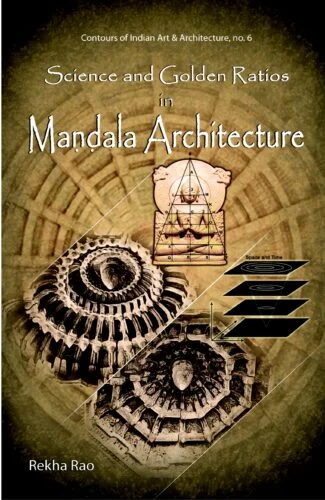
The book throws light on the structural, philosophical and scientific perspectives of mandala designs of temples, and explores the relationship between spiritual ideas and the ideas of scientific advancement as exhibited in the mandalas of ancient temples.
Indian temples are a rich repository of the religious, cultural, and artistic life of the society. Of special importance here are the circular, intricate, and artistic patterns called the mandalas, which are placed in the bhuvaneshvari of the temple that is conceived as the microcosmic representation of the cosmos in a temple.
The study of the significance of the mandalas are based on the aspects like symbolism, fractals, numerology, and sacred geometry that are used as codes to reveal the mystery of the universe and the eternal laws that govern the order of the universe. The diagrams of mandalas, concealing vast and grandest knowledge of science and spirituality in an amalgamation, are condensed to simplest graphic designs so that the knowledge of science was accessible to the commoners. The study presents the structural, philosophical and scientific perspectives of some mandalas belonging to the early Calukya, late Calukya and the Hoysala temples of south India. The research work also explores the study of the Golden ratios on which the mandalas and the divine images of the temples are designed.
The book will prove extremely absorbing to scholars concerned with the study of the art and architecture of the ancient divine sculptures.

The world famous Amaravati sculptures and art pieces take the pride of place in India’s best museums today. This volume lists and analyses with photo illustrations the large museum antiquities typologically and chronologically. The book will interest historians, archaeologists and general readers.
The Amaravati sculptures are famous throughout the world for their special features and they form a distinct school of art called Amaravati school of art. Though Amaravati art pieces take the pride of place in Indias best museums, the sculptures in the site museum at Amaravati itself have not been assigned enough significance. This volume lists and analyses the museum antiquities typologically and chronologically. The effort includes all the museum antiquities, including many objects of seemingly minor importance, which are described in detail. Their types and features, provenance, probable period, measurements and accession number, references to them and details of inscriptions relating to them are provided. The catalogue of objects features twenty main headings including the pillars, slabs, pilasters, beads, ceramics and copper plate grants. There are photo illustrations of a large number of antiquities that form the museum collection which have enormous archaeological, epigraphic and iconographic merit. The book will interest historians, archaeologists and general readers keen on knowing about Indian culture and art.

The work it two volumes explores the physical and emotional interaction between Siva and Parvati as represented in sculptural works in the Indian subcontinent and examines a host of images supported by classifications of Siva-Parvati figures in texts like the Saiva Agamas and iconographic studies of the past decades. The images are related not only to religious beliefs but also iconographical.
The work explores the physical and emotional interaction between Shiva and Parvati as represented in sculptural works in the Indian subcontinent. In two volumes, it examines a host of images supported by classifications of Shiva-Parvati figures in texts like the Shaiva âgamas and iconographic studies of the past decades. It surveys an astounding sculptural diversity of Shiva-Parvati icons particularly forms of seated or standing Umasahita-murti, standing Alingana murti and Tantric forms of the deities. The images are related not only to religious beliefs but also iconographical research for instance, linking depiction of figures in certain postures and areas to their places of origin. With numerous charts, it highlights iconographical peculiarities, distribution and popularity, and identifies similarities and differences over periods of time and areas of making. Referring to sculptural collections in museums and private acquisitions, the painstaking research examines the sculptor’s technique of combining aesthetic harmony and beauty with the sacred in ontological symbols as of Umamaheshvara. There is a detailed mythological background concentrating on the individual character of Shiva and Parvati in their mutual relationship; their marriage and conjugal life; explicitly Shaiva motifs where the major concern is with the all-important Lord Shiva; and the physical and emotional interaction of Shiva and Parvati as man and wife. An entire volume is devoted to reproduction of the rich representative sculpture studied through more than 570 black and white photographs and over 160 colour plates. The volumes will prove useful for scholars of Indological art and art connoisseurs as well as general readers.
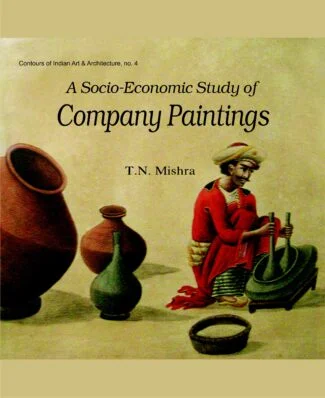
This book describes the social and economic condition of India as shown in the Company paintings during the British rule. It also sheds light on the techniques adopted by the artists in depicting the various themes in paintings.
The paintings of the eighteenth and nineteenth centuries are recognised as a valuable source for the study of social and economic life during the colonial period. A deep study of the Company paintings of the time is significant because the paintings have carefully observed and recorded the Indian scene in all its aspects, particularly its history and society.
The book discusses the evolution of the Company School of Art, as a result of interactions between traditional Indian paintings and European paintings, and its spread to most of the art centres in India. In a thorough attempt, it deals with its thematic preoccupations and the common features of the paintings: their favourite subjects, especially their depiction of the professions, and the variety of common people they carefully depict. It examines the techniques adopted by the artists: their choice of mediums and colours and their style of depicting the themes. It also takes up the social status of the artists at the time.
The book will fascinate lovers of Indian art and will prove useful to scholars and students especially involved in study of evolution of Indian art and modern art.
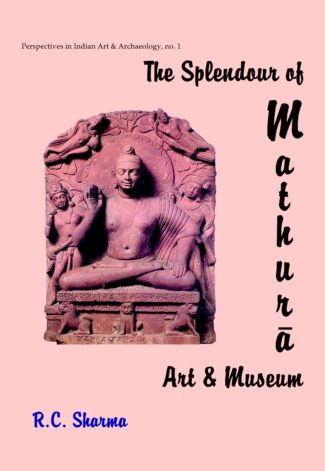
The book presents various stages of development of Mathura art from its earliest times and, in the process, gives a valuable account of the archaeological explorations and expeditions in the region since 1836.
It is a treasure document enlightening the various stages of development of Mathura art from its earliest times. Introducing the socio-cultural background from the pre-historic times it furnishes a valuable account of the archaeological explorations and expeditions in the region since the first antiquity saw the light of the day in 1836. Indigenous by birth, the Mathura School of Art flourished on the banks of Yamuna, reached its pinnacle under the Kushana patronage, continued in the Gupta age followed by Medieval times, thus dominating the entire Northern India for more than five centuries leaving behind imprints to be followed by the succeeding art styles. The type of stone and style changed with time and it did get influenced by its contemporary School of Gandhara once, but its exclusiveness remained down the ages. Beside the analytical assessment of the folk art tradition of early terracottas and yaksha cult, Dr. Sharma brings to light for the first time the salient features of the evolution and development of Mathura sculptures on various themes including Jaina, Buddhist and Brahmanical. The book is an uptodate document of new researches, fresh arrivals and latest reorganisation of the Museums galleries. The coloured and black & white illustrations in this book speak of the display of rich Mathura art in the Museum. The Index to the Exhibits will facilitate in spotting the description of a specific object quickly. Important sites have been located on the City and District maps and situation of galleries and ancillary units of the Museum can be found on the Gallery Plan. While the visitors will find the book a very remunerative companion during the Museum round the scholars will equally be benefitted through the prolific research material it reveals.
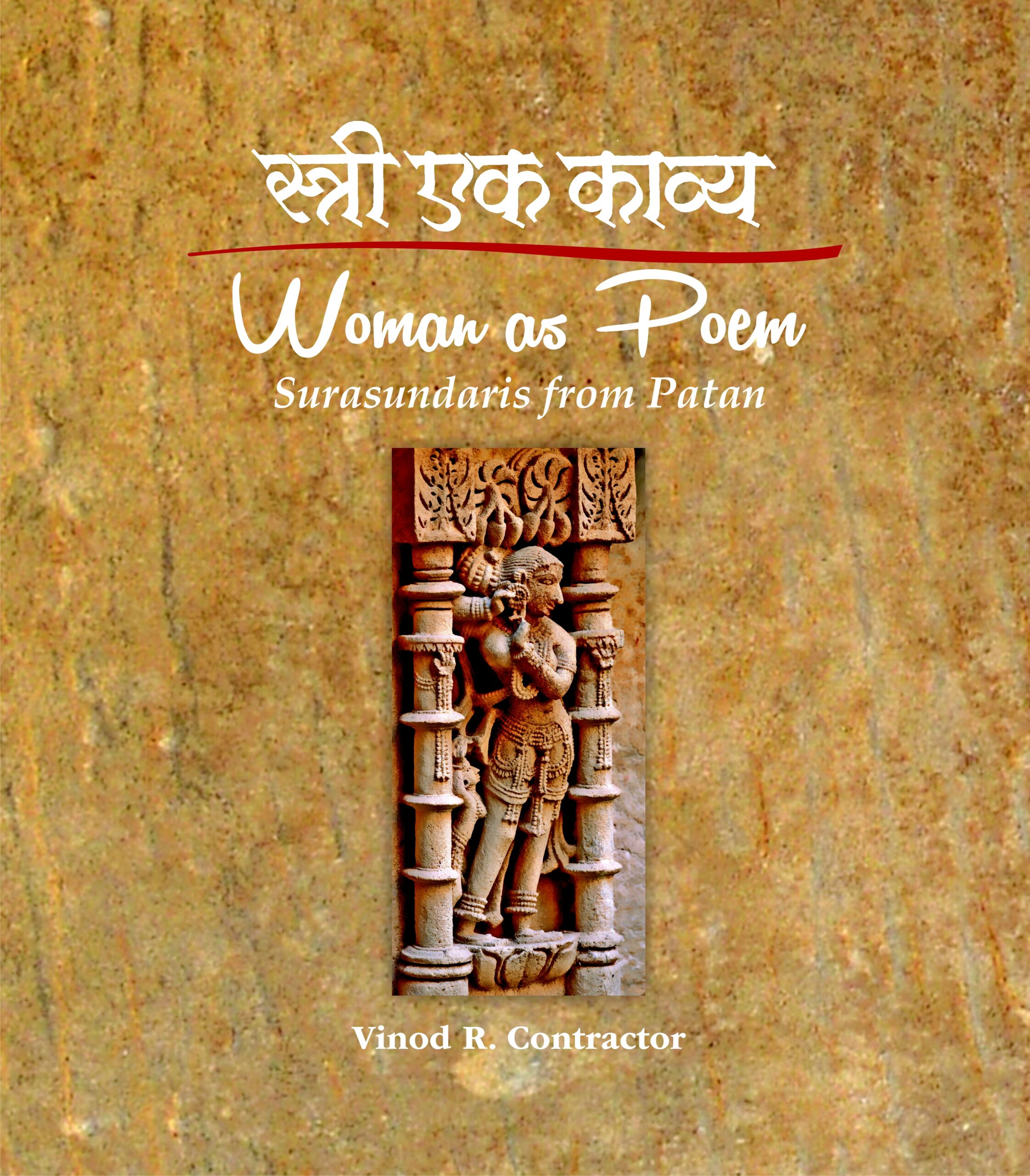
Surasundaris on the walls of Rani-ki-Vav remind us that sensuality is the doorway to spirituality, that growth and fertility are as important as piety and devotion. The stepwell in Patan is perhaps the most admired structure of its kind and is a testament to the imagination and skill of the sthapati.
Surasundaris on the walls of Rani-ki-Vav remind us that sensuality is the doorway to spirituality, that growth and fertility are as important as piety and devotion, that even before we undertake dhyana of the deity in the sanctum or in different parts of the vav we must saturate our mind with the beautiful so that we can attain the state of serenity and purnatva.
Sensually evocative, beautiful from tresses to the toes, with eyes downcast, surasundaris are an expression of unsurpassed grace. They are a reminder that a woman is the most adorned expression of prakriti, that to indulge in it is to affirm our senses and enrich our mind, but the aesthetic journey does not stop there. The contemplative viewer will see the surasundari as a poem and a song, where every limb and every gesture are the lyrics, the texture of the stone is the rhythm, where metaphor is the key that will unlock the many meanings and suggestions.
The stepwell in Patan is perhaps the most admired structure of its kind and is a testament to the imagination and skill of the sthapati and as we walk through its many-tiered pavilion we almost hear the hushed voices of the queen and her retinue that stayed there away from menacing eyes and sweltering heat. Come, tread softly, as you are entering a hallowed space of beauty.
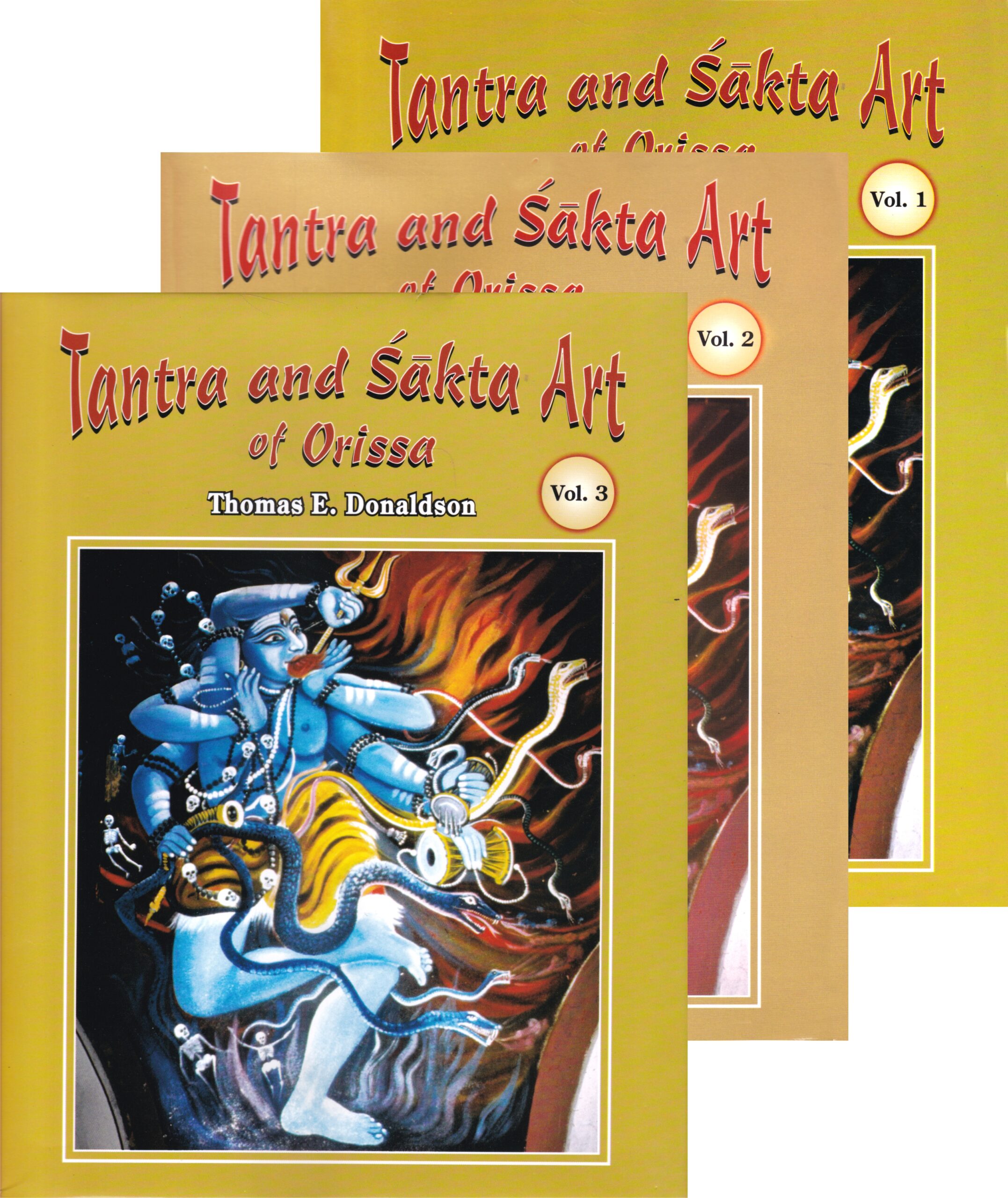
Here Prof. Donaldson presents a rich and variegated picture of the sakta/tantra art of Orissa, highlighting the evolving iconography of individual images. He focuses on different forms and depictions of the Goddess as Sakti, painstakingly analysing the architecture of a number of temples and their images.
The emergence of Tantrism and Shaktism in the sixth-seventh centuries in ancient India symbolised a belief in fertility worship, worship of the female principle with the Devi/Goddess supreme as the Energy/Power the substance of everything, pervading everything. In Orissa in particular, the shakta/tantra cults played a major role in the religion and culture of the region and this is testified by its many temples and sculptural wonders therein. In this work, Prof. Donaldson presents a rich and variegated picture of the shakta/tantra art of Orissa, highlighting the evolving iconography of individual images. Based on largely first-hand study of the temples and their iconography and also referring to various textual sources, he deals with, in detail, the shakta mythology of the region along with its depiction in iconography. He focuses on different forms and depictions of the Goddess the Matrikas, Camunda, Naga/Nagi, Manasha/Jaratkuriu, Tara, the Mahavidyas, the Yoginis and Dakinis and images of Purusha/Prakriti, Agni/Soma and Linga/Yoni, Painstakingly analysing the architecture of a number of temples and their images. The work abounds in photographs (more than seven hundred) revealing the variety of forms of the Goddess and their widespread distribution and provides many maps, diagrams and iconographical charts as well. A thorough research giving attention to minute details even while studying a wide range of iconographical traditions and forms, this work will prove an indispensable source book for young as well as established scholars.

This volume studies the beginning and evolution of temple architecture in India and deals with temples constructed by different ancient and medieval dynasties in various parts of the country. It contains over a hundred plates of temples and carvings on them, cave faades, pillar descriptions, etc. Many Jaina temples are also covered.
This volume is a study of the beginning and evolution of temple architecture in India which covers sculptures and carvings as well. With over a hundred plates of temples and carvings on them, including cave facades and pillar depictions, it deals with temples constructed by the different ancient and medieval dynasties in Indian history, particularly the Early Western Calukyan and Later Western Calukyans, Pallava, Pandya, Cola, Hoyasala and Nayaka. With illustrations that include maps, plans of caves and even viharas and caityas, it undertakes a study of the temples found in different States of India. The research discusses the variations in plans and elevations to examine development of temple architecture over time and new experimentations in the building of temples by use of various materials. Reconstructing art and architectural styles from the remnants of the ruined temples in many places, it explains terms and concepts in temple building and architecture and cites examples of various temple styles and traditions including the best and the earliest ones. The focus is on the Dravida and Nagara temple styles and a third hybrid form of ÷ikhara that developed in the Deccan. Many Jaina temples are also covered. The book will prove extremely useful for scholars and students of Indology, particularly those studying Indian religious architecture.
| There are no products |